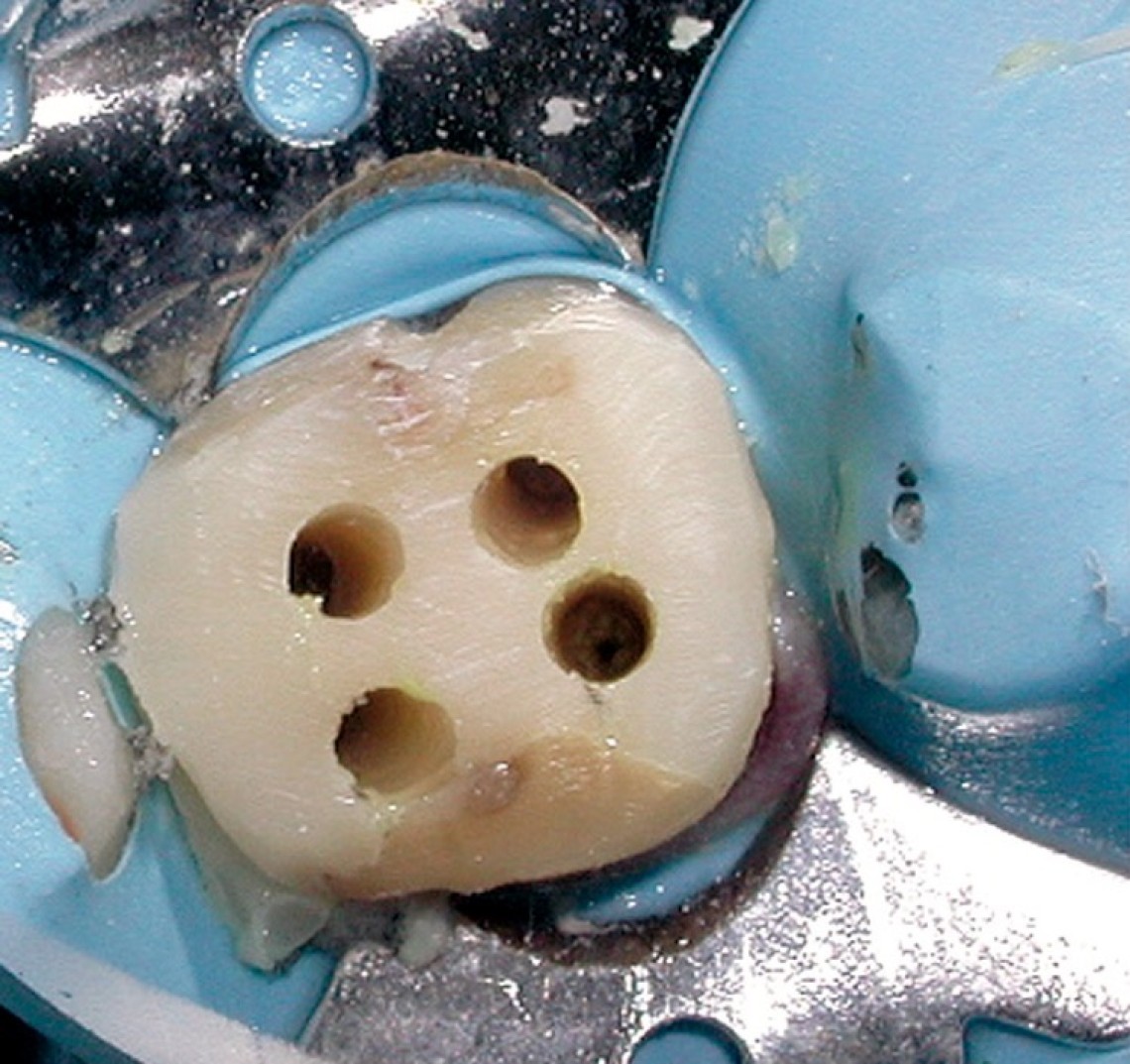- During root-canal-therapy, particularly in posterior teeth, the treated tooth is highly liable to fracture, particularly in the intra-appointment period, where the tooth has often been dressed with temporary materials, and left relatively hollow, in order to regain access to the pulp chamber and root canals. Therefore, in these cases, sometimes I believe it may be wise to adjust the tooth “out of occlusion” or to reduce the occlusal forces transmitted on it during static and dynamic movements. The idea of this is to reduce the liability to fracture in between root-canal-therapy appointments. The tooth will most commonly require a crown in the future, so the benefits of occlusal adjustment here will often outweigh the risks. Please not this approach is only suitable if there are sufficient occlusal contacts elsewhere in the mouth.
- A simple, effective tip when maintaining the conformative approach is to pick a “reference point/teeth” and check the occlusal contacts between these teeth before restoring. This contact can be checked and re-checked during/after the procedure. After restoring, check this “reference point/teeth” once more. This contact should be unchanged following your final restoration.
Further reading –
“Restoration of the root-filled tooth: pre-operative assessment” – CME Tait, DNJ Ricketts, AJ Higgins; British Dental Journal 198, 395 – 404 (2005) Published online: 9 April 2005 | doi :10.1038/sj.bdj.4812187
“Restoration of the root canal treated tooth” – S Eliyas, J Jalili, N Martin; British Dental Journal 218, 53 – 62 (2015) Published online: 23 January 2015 | doi :10.1038/sj.bdj.2015.27
“Restoration of the endodontically treated tooth” – F Mannocci, J Cowie; British Dental Journal 216, 341 – 346 (2014) Published online: 21 March 2014 | doi :10.1038/sj.bdj.2014.198
&
“Practical occlusion for everyday dentistry” – Ruiz JL, Paul R..; Dentaltown. 2009;10:48-56
“Occlusion: Good occlusal practice in simple restorative dentistry” – SJ Davies, RMJ Gray, PW Smith; British Dental Journal 191, 365 – 381 (2001) Published online: 13 October 2001 | doi :10.1038/sj.bdj.4801185




